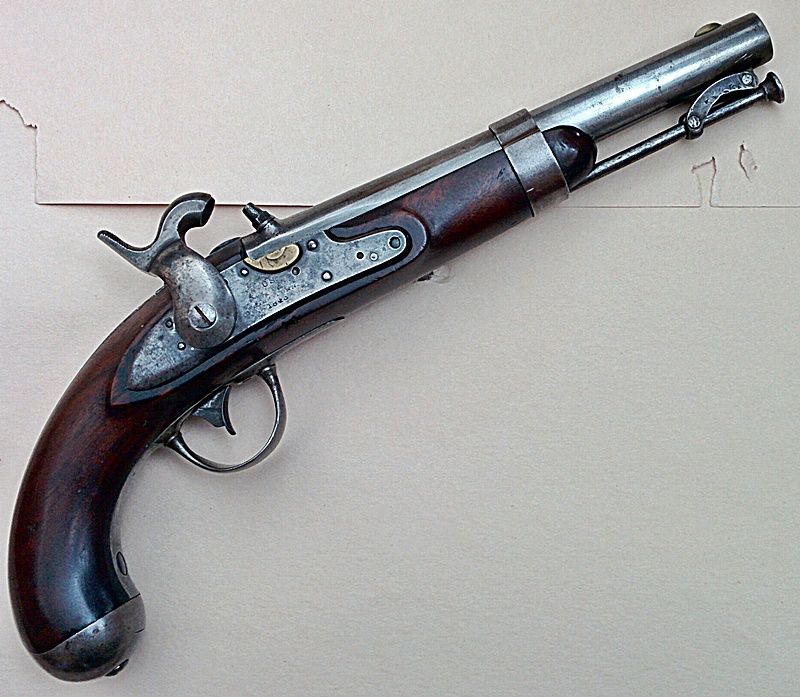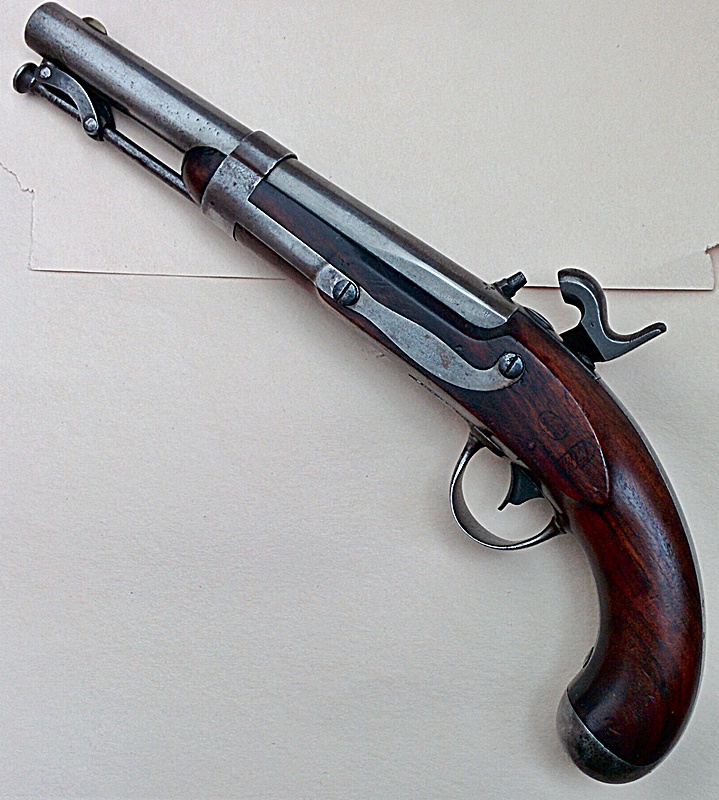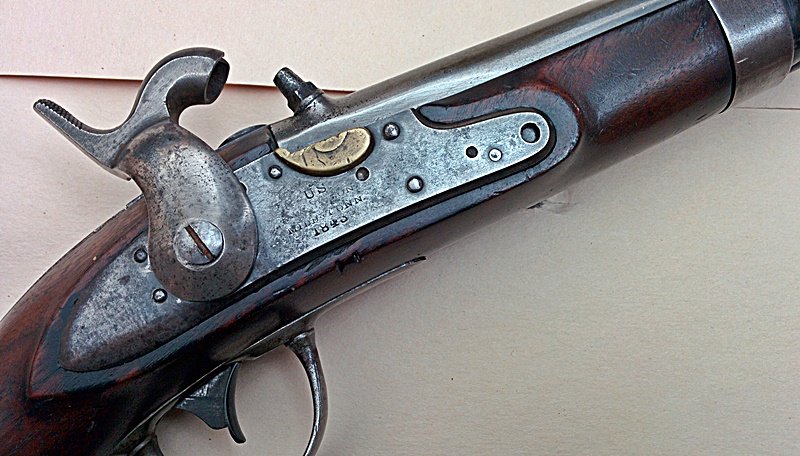That is a very nice example of one converted to percussion.
About 8 years ago, a very good friend brought me a shoe box full of parts and it was one of these pistols made by Waters and Johnson. The original owner was converting it back to flint, but died before he finished the project. It was missing the butt screw, the mainspring, the original side lock screws, the sear was broken, there was a crack in the wood, etc., etc. The only good news was there was already a repro brass bolster fitted as well as a replacement cock, frizzen and spring had already been fitted.
At first I did not want to work on it, as I had no idea the time I would have to invest in fixing it and this gun had some very deep pitting and metal discoloration issues. Then my friend informed me the owner had been a Widow's Son and his Widow wanted it finished to put in a shadow box as a remembrance of her departed husband. I was informed he had worked on it for many years. OK, so I took it in.
It just so happened I buy original gun screws and I was shocked to find two I had purchased a couple years before at the Baltimore Antique Gun Show were for the butt plate. I had thought they might be butt plate screws, but had no idea which pistol they fit. Fortunately, the owner had already tapped the lock plate for modern TPI thread side lock screws, so finding and modifying the heads was not that big of a deal. The crack in the stock was no problem and got that fixed rather easily. But then things got interesting.
I have never made a main spring before and was not looking forward to that, but Dixie sold a repro. WOW, did I have to carefully fit the stud that holds it up front and adjust the screw hole. I was not sure it was going to be long enough, but it just BARELY was long enough to reach over the front of the tumbler and not fall off in operation. WHEW, that was luck. Of course I could have heated and bent the hook longer, but again, I am not familiar with rehardening and tempering a mainspring.
While I was waiting for the mainspring to come in from Dixie, I took the broken sear and a couple other parts to a Civil War Show held here in Richmond. There was only one guy who had original parts and he did not know what they were for. However, there were THREE original sears, so I bought all three as the price was very low on each. He also had another part or two I needed, but since these were made before the “Interchangeable Parts Manufacturing System,” I had to fit them to the lock. Surprisingly, two of the three Sears would have worked with only a tiny bit of fitting, so I chose the best one. It did not take that long to finish the lock after I had fit the mainspring and original sear.
However, then I was in a quandary about the finish. There was a lot of black rust all over the metal parts with large areas of color differences and some heavy pitting, but these pistols were originally finished “Armory Bright.” Since this pistol was not in good enough condition to have the pits welded up, I decided to try Brownell’s Oxpho Blue to sort of blend the metal colors together. It worked very well and saved me from doing a rust blue job on the parts. I gave all the metal parts a thin coat of Rig Grease for long term rust prevention and hand rubbed that out.
The owner had stripped the finish off the wood stock and it was heavily stained in spots, so I carefully dyed it and used a couple coats of Tru Oil just to get some finish back on the wood. I used a fine Scotch Brite type abrasive pad to knock off the shine. Then I finished it with one coat of beeswax/turpentine/linseed oil finish and rubbed that back hard. While I would have preferred the metal to be “Armory Bright,” the overall effect was very pleasing, if I do say so myself.
When my friend saw it, he could not believe it was the same pistol. I had written out a statement on what I had done to the pistol and asked it be put that in the rear of the shadow box, behind the pack panel, for future documentation. I returned the broken original parts in a little pouch I had hand sewn and asked it be put in the bottom of the shadow box. The Widow was delighted beyond words. She made a copy of the paper I had written so her children and grandchildren could read it without having to take the shadow box apart. I explained she could work the lock and dry fire it, but suggested not doing it many times as I was informed she was not a flintlock shooter and thought to save the flint and flint pad I had made for it.
Personally I was amazed at how well this pistol fit the hand and balanced. It was so much better than a Navy Arms repro of their “Charleville” pistol I had owned and fired years before, it was like night and day.
You have a right to be proud of that pistol.
Gus












